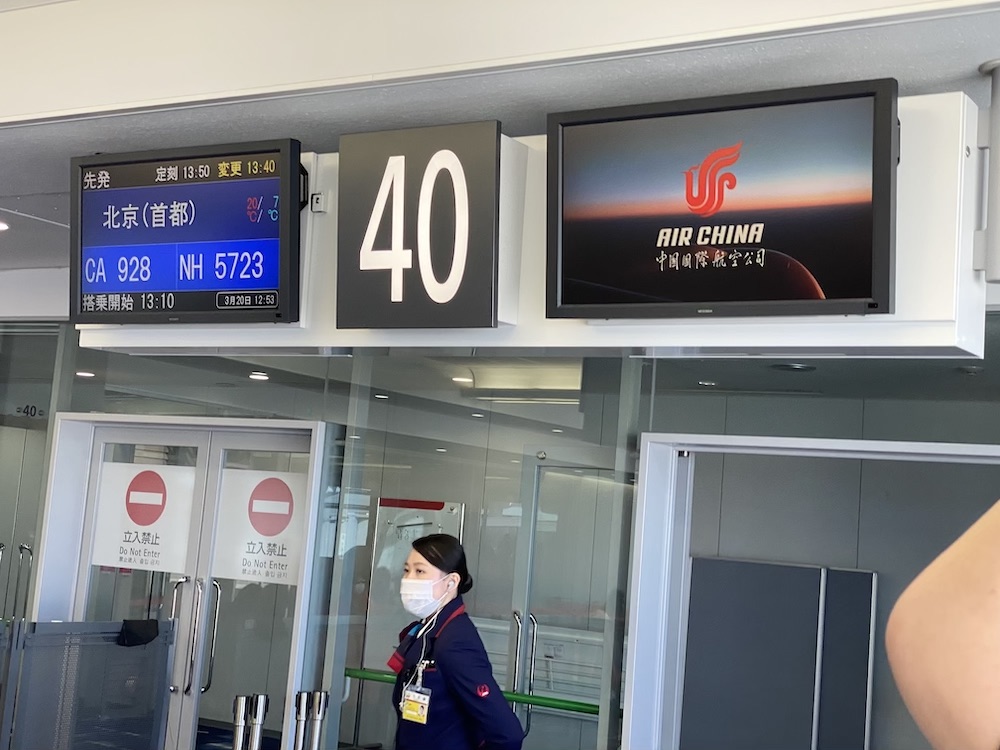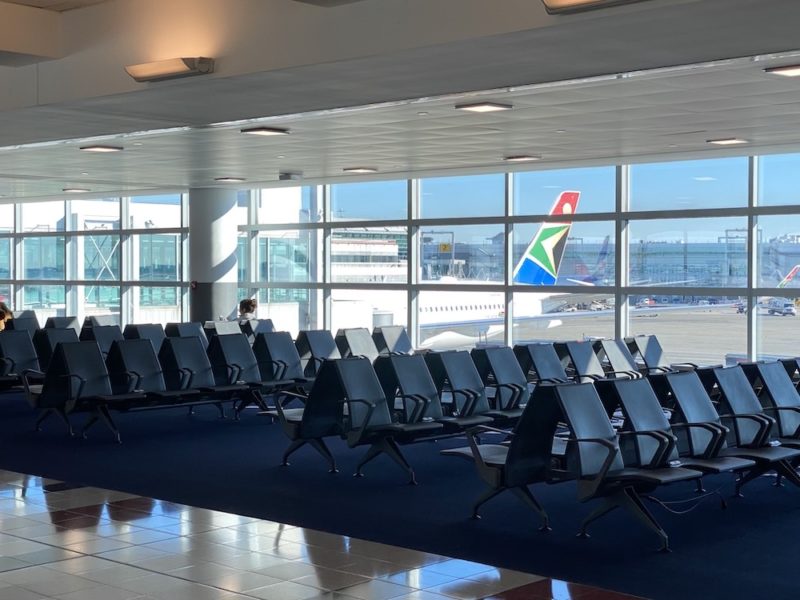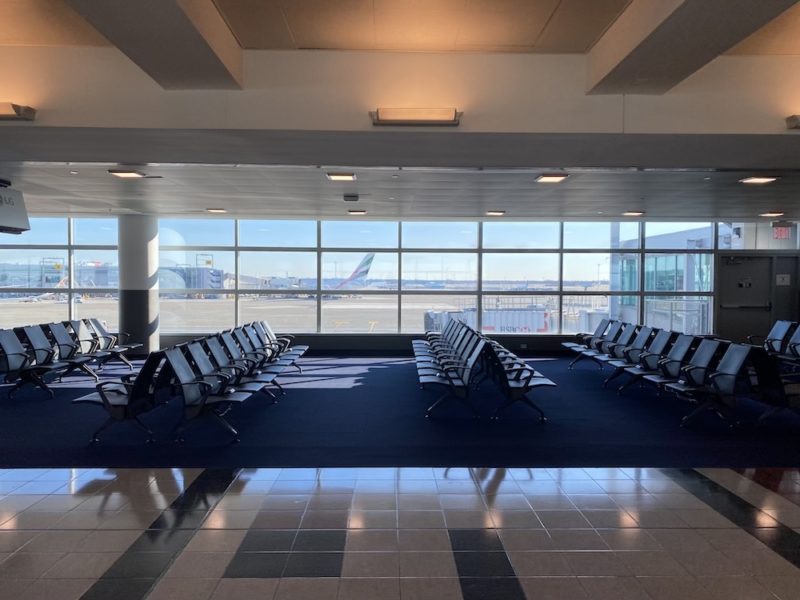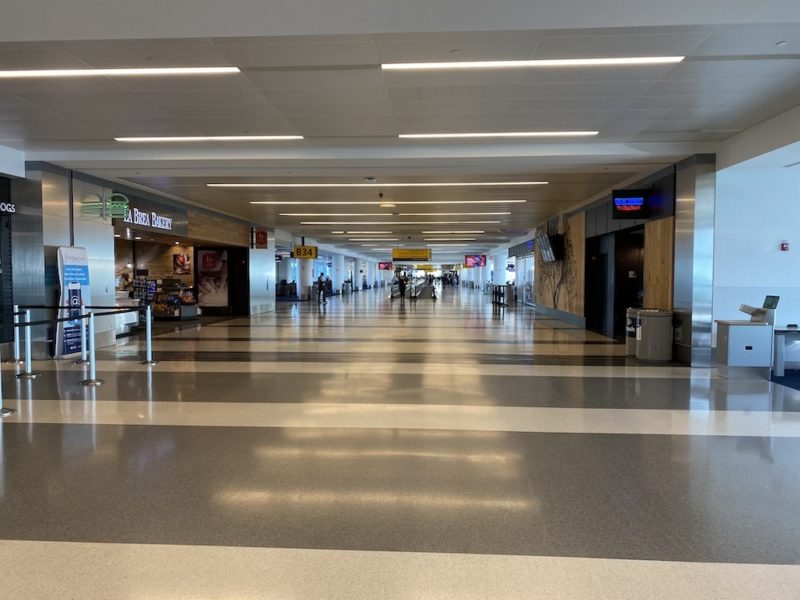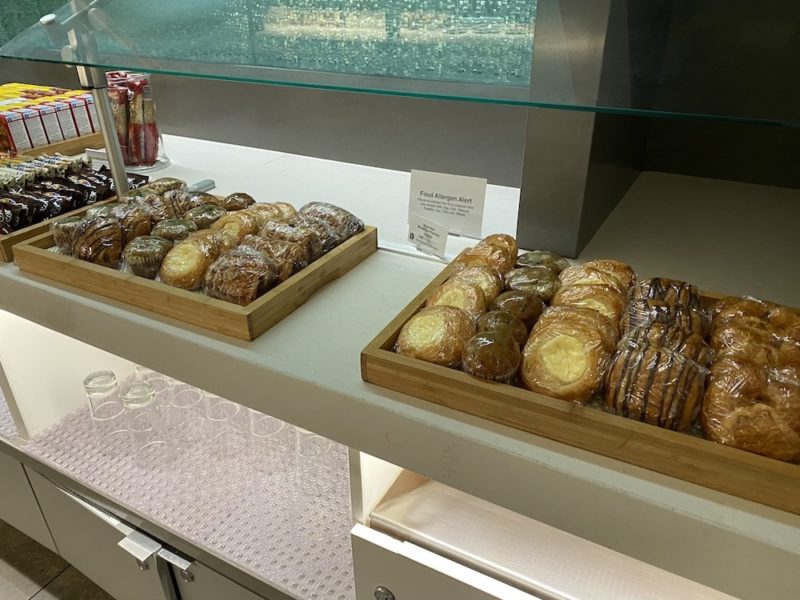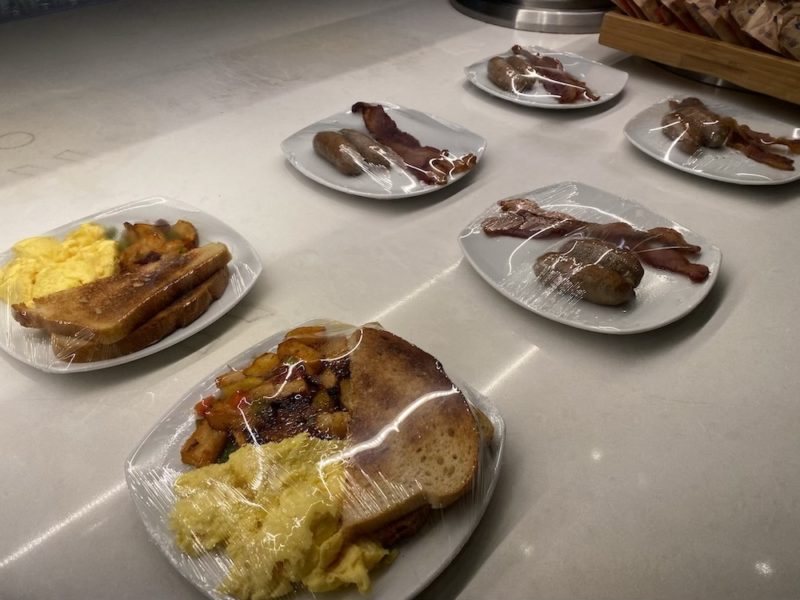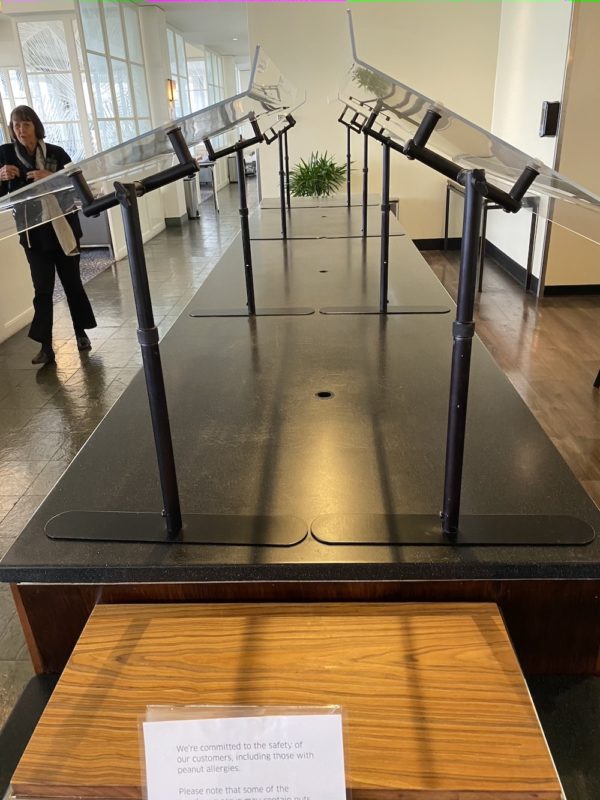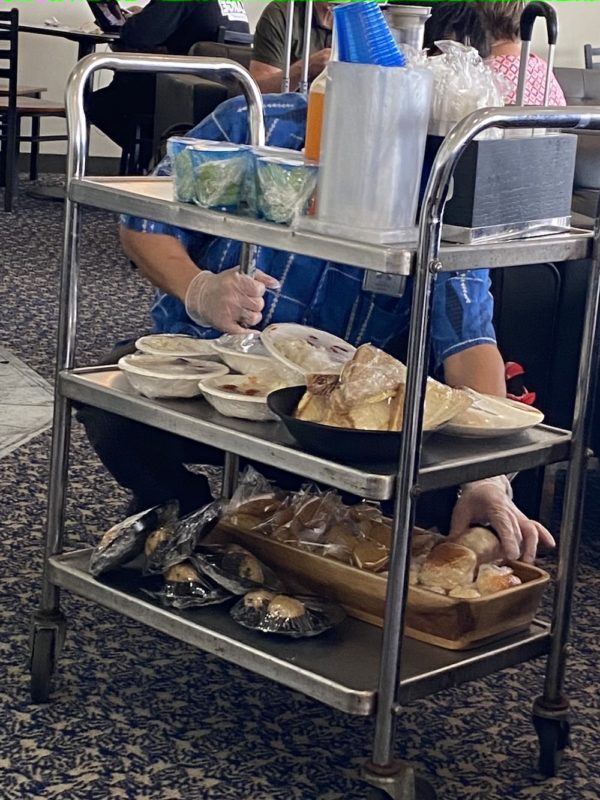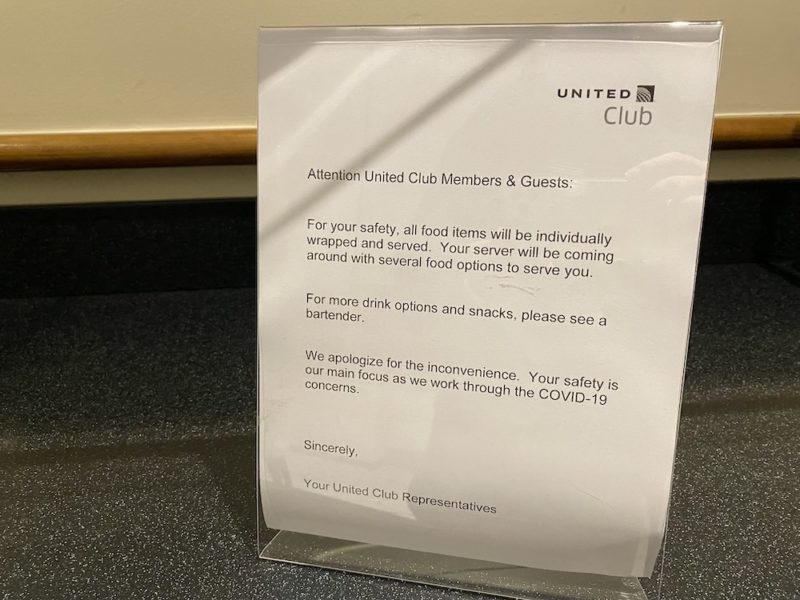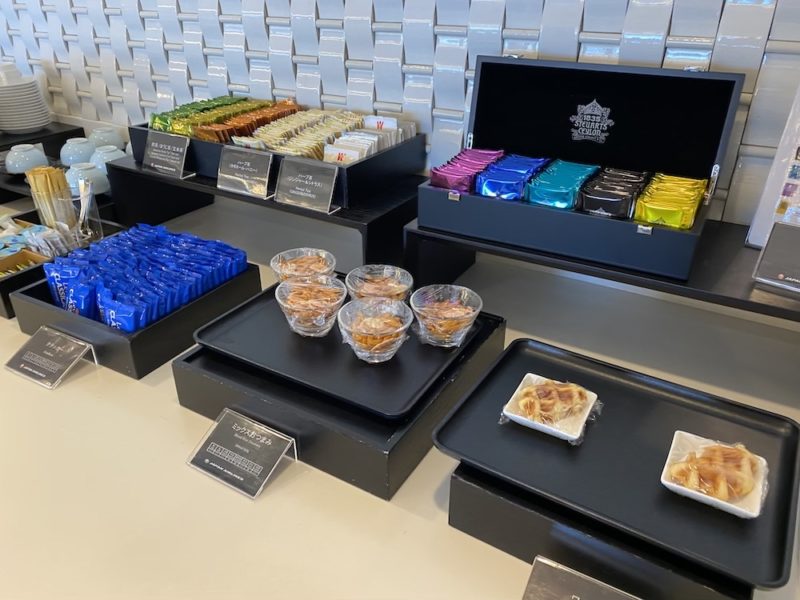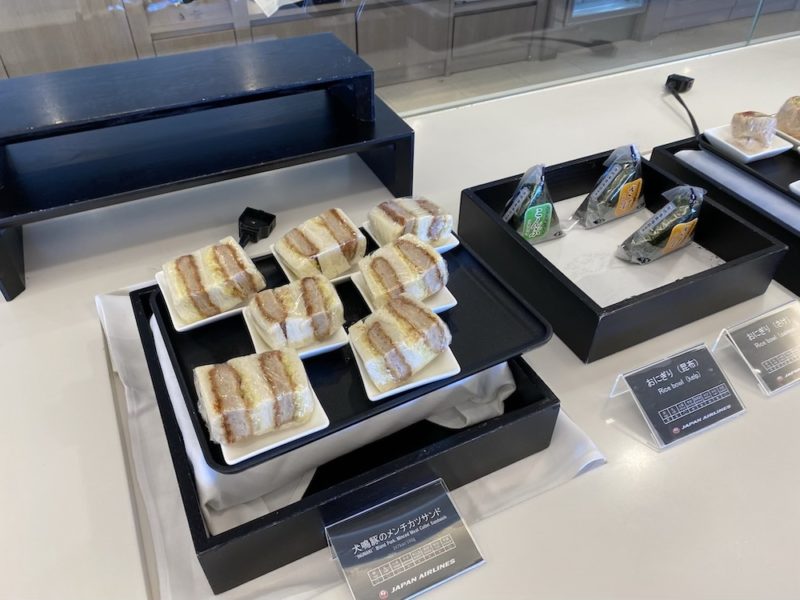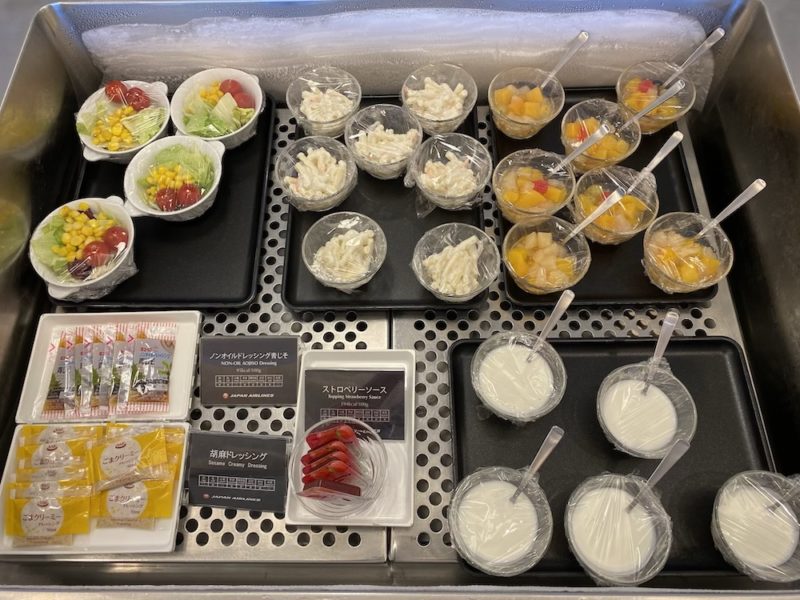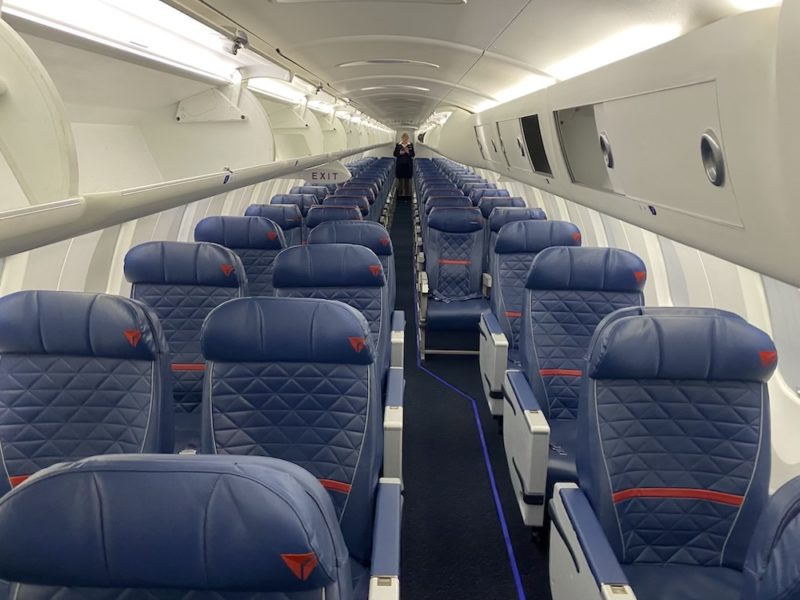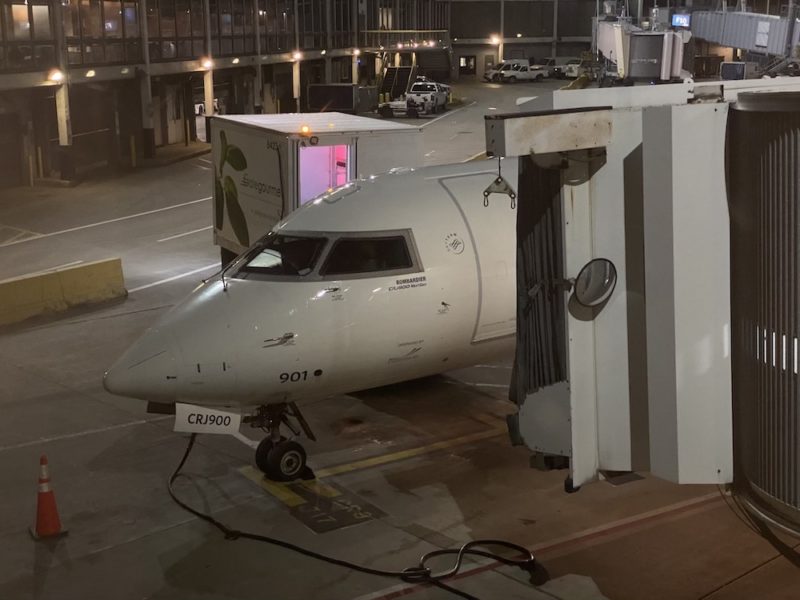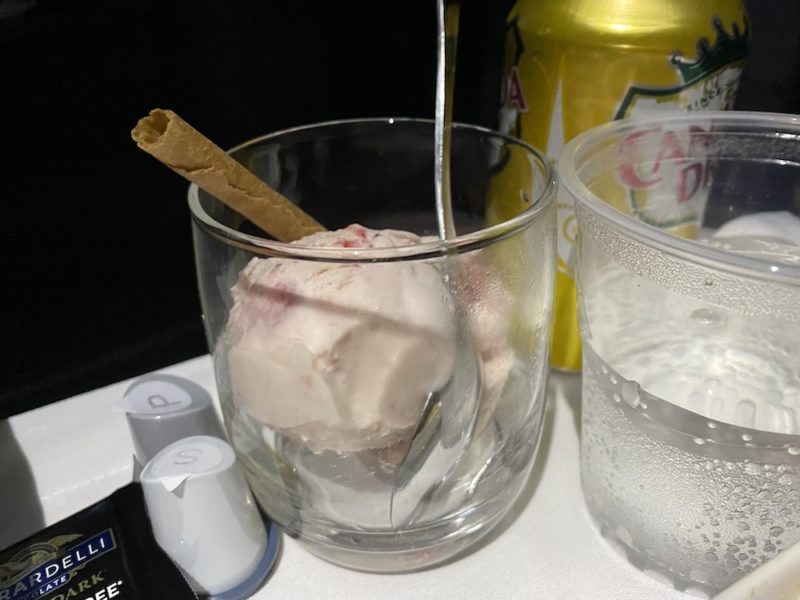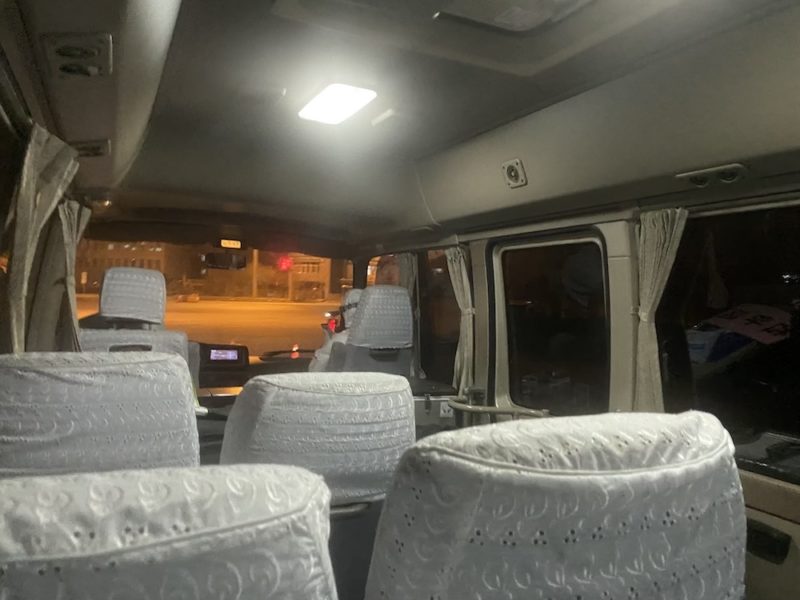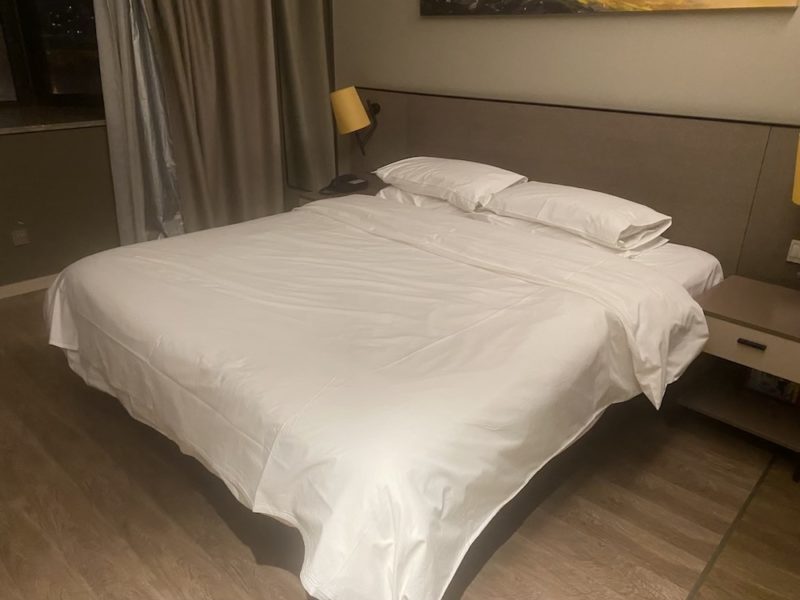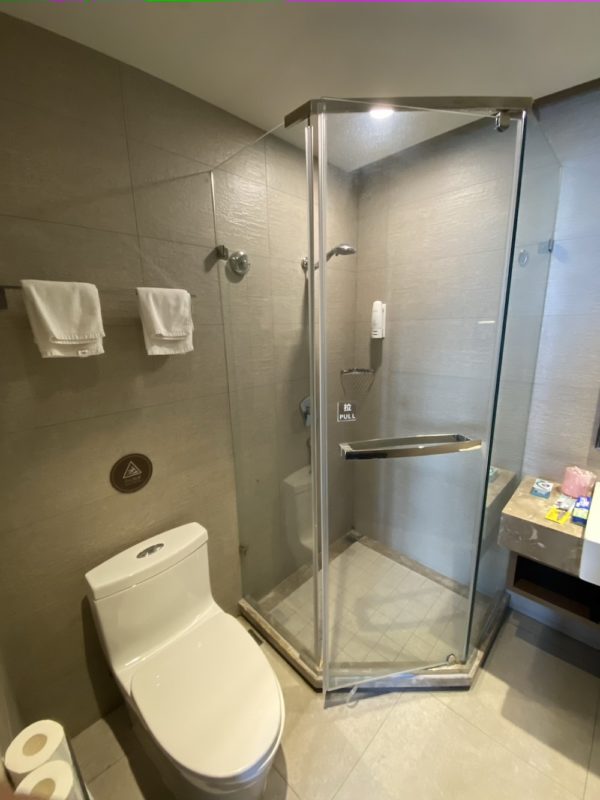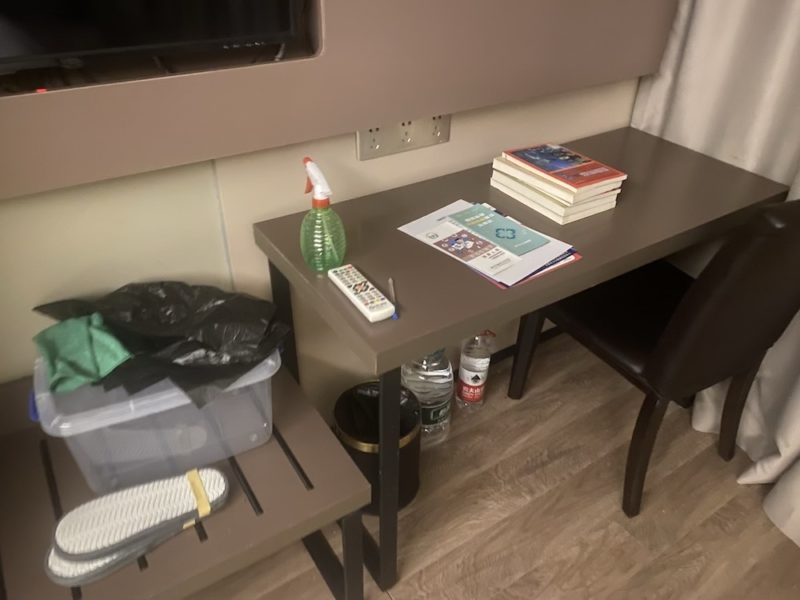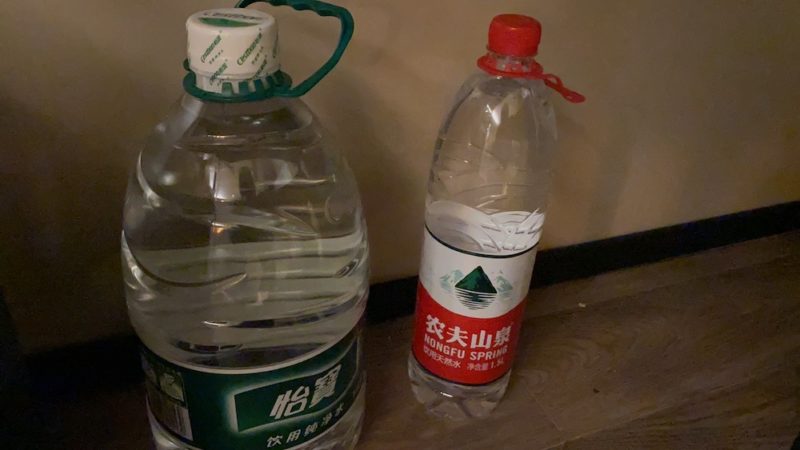All non-essential travel is strongly discouraged at this time. Carefully evaluate the risk before flying. Policies may change every day. The experience below may not be available anymore.
At the time of writing, the total number of confirmed COVID-19 cases in the United States skyrocketed to over 54,000; with no sign of stopping.
With my university switching all classes to online study, I decided to leave the country and go back home. Studying near Chicago and residing in Tianjin, China, getting back this time was not easy. Below is a map showing the two cities:

Almost all routes connecting North America to Asia have been cancelled, with many countries that used to allow transit now not doing so.
Design a Safe Passage Back to China
The main goal of this trip was to fly safely. With dozens of COVID-19 cases coming into China from foreign countries every day, I tried to avoid any crowded flights from high-risk countries. I worked on booking flights in a backward fashion, one by one to Beijing first.
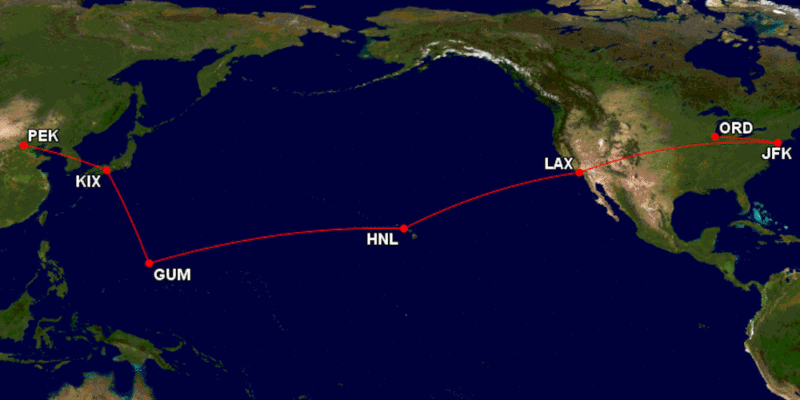
By searching through the booking system, and looking at every seat map for international flights arriving at Beijing, I found flights from Osaka, Japan that were being operated by Air China, that were always near empty. This route also has a low risk of getting cancelled.
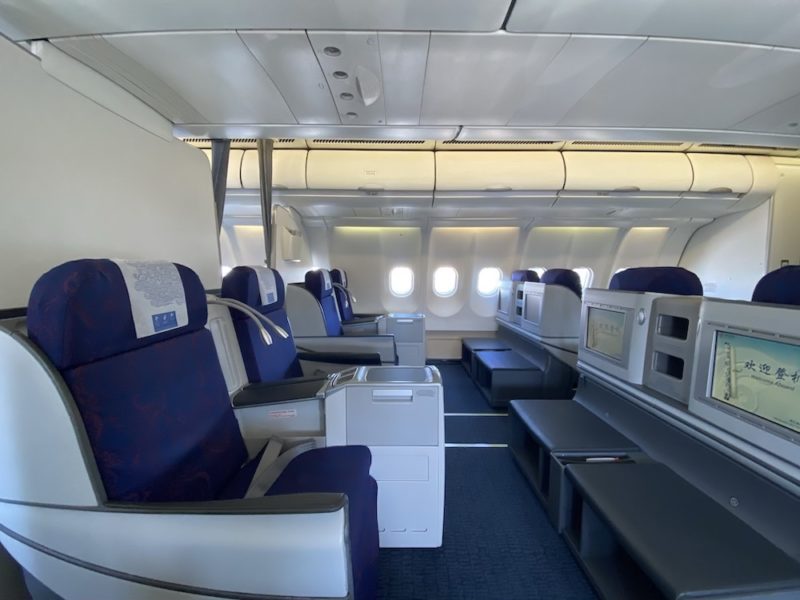
Next I needed to get to Osaka.
Because Japan has declared that all visas issued from China and Korea are now invalid, I had to find a flight operated by an Air China partner; one that would allow me to transit directly at the airport, without going through immigration.
Scanning through Osaka international flights arrivals, the only option that came up was from Guam and was operated by United.
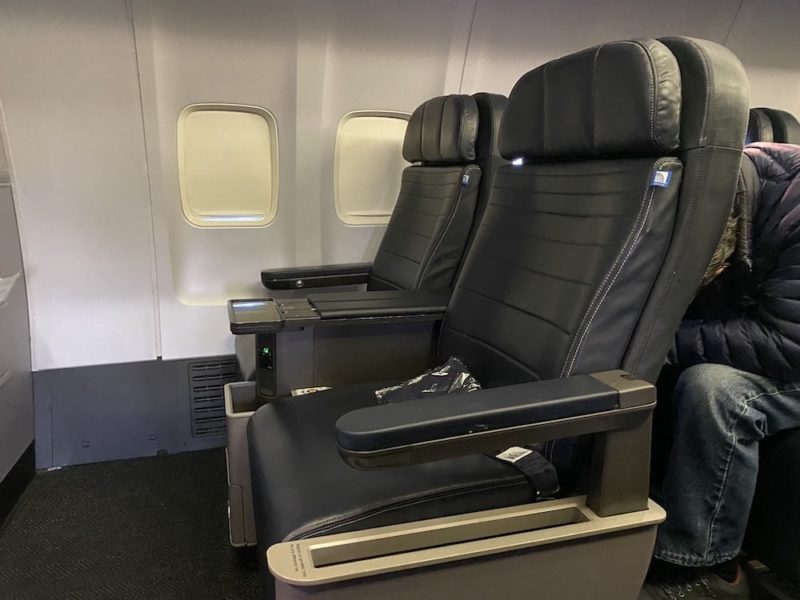
Unfortunately that flight departed in the morning and there were no flights arriving before that, which would allow me to direct transit.
Getting to Guam became relatively easy. The straight forward way from the mainland United States is through Hawaii.
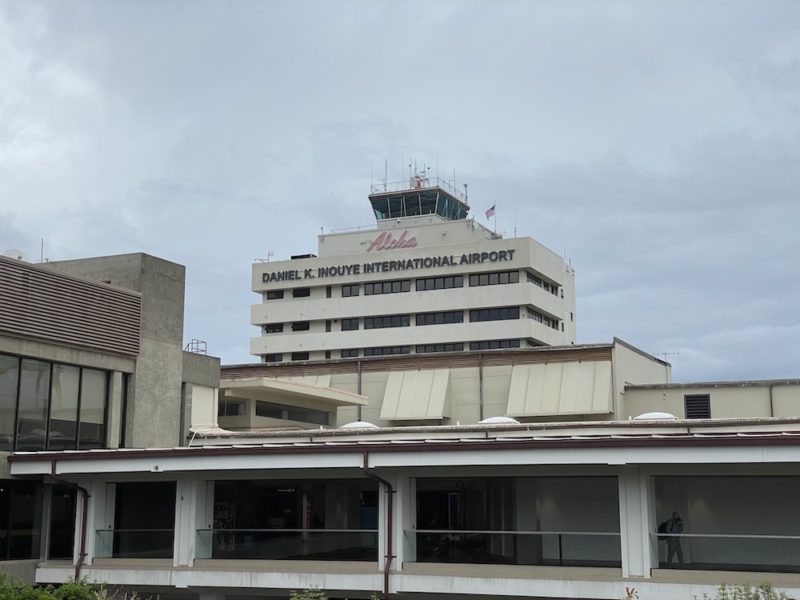
Getting to Honolulu, I chose American Airlines from New York JFK with transit at Los Angeles. Considering that Los Angeles is also a hot spot for the virus, an overnight transit, with fewer people, in the terminal was intentionally chosen.
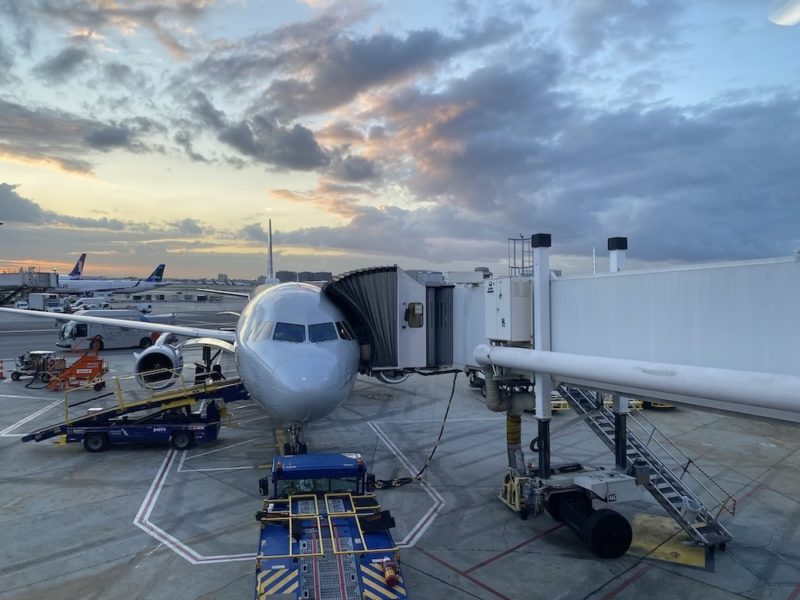
United operate a daily direct flight between Honolulu and Guam. That flight became my only option.
Airlines Ticketing
The first flight, Chicago to New York JFK, was probably the easiest. Considering that there were would not many people in the airport at 05:00, I intentionally chose the early-morning Delta flight operated by a CRJ-900 aircraft. Booked in domestic First Class, I was able to enjoy an isolated single seat.
This ticket costs $182.40, tax included.

For the next two legs, New York JFK to Los Angeles and then on to Honolulu, I chose American Airlines as mentioned above. As an Executive Platinum member, I received a complimentary upgrade on both flights into Business Class from Economy. The transcontinental flight was even in the full-flat Flagship Business.
This ticket costs $183, tax included.
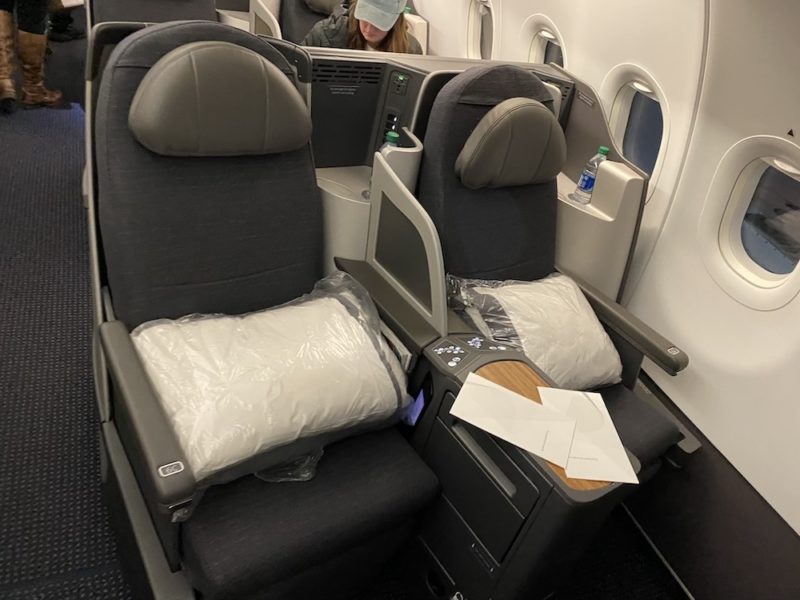
The next flight, Honolulu to Guam, there was only one option. This ticket was exceptionally expensive. One Economy Class ticket was going to cost $1,439; I chose to use miles. As a Premier Gold member, I was able to choose the single seat at the exit door; this meant avoiding having to sit next to a stranger.
This ticket costs 30,000 United miles and $5.60 tax.
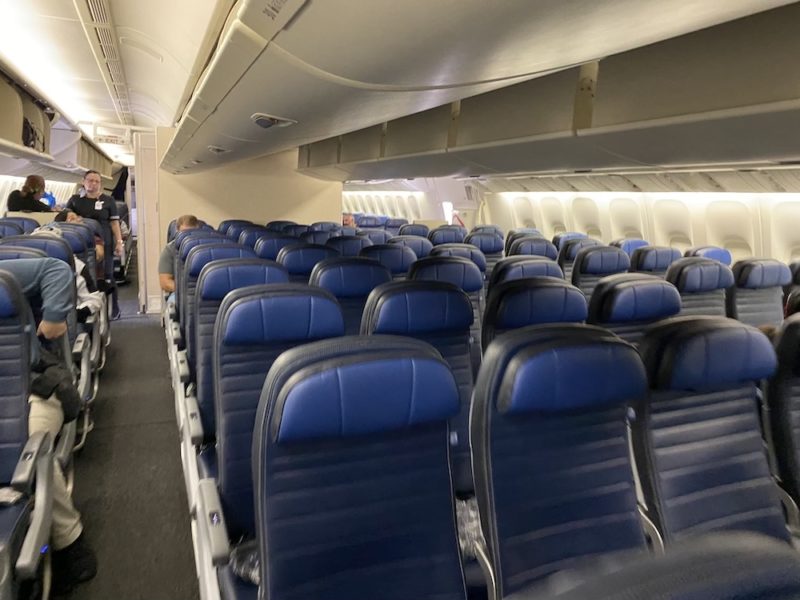
For the last two flights, Guam to Osaka and Osaka to Beijing, I chose Business Class to stay safe, even thought it was highly-priced. Ticketed through United, all on one ticket, allowed me to get both boarding passes at Guam and transit directly at Osaka.
This ticket costs $3,750.80 tax included.

Conclusively, the whole trip from Chicago to Beijing via New York, Los Angeles, Honolulu, Guam and Osaka cost $4121.8; remember this is with the one leg in Economy Class.
Airport Experience during the COVID-19
This article will not extensively describe the passenger experience, like other flight reports.
Departing from Chicago O’Hare, the airport was still operating normally. However there were a few passengers, including myself, who were wearing face masks.
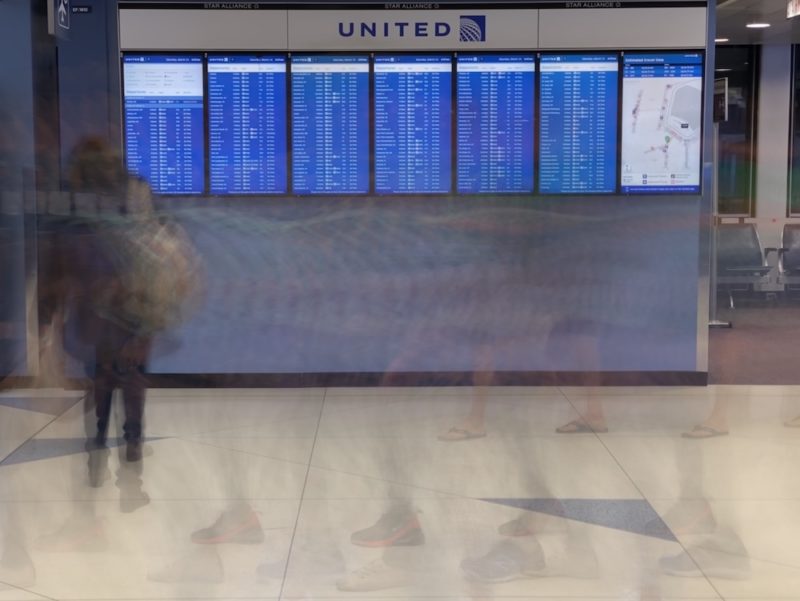
From my observation, none of the airport staff, including airline check-in and the TSA, wore masks. Only the cleaners at New York JFK did.
For passengers wearing masks, TSA requires you to take it off during the identification process. For passengers wearing a protective suit, you need to take it off during security. So I suggest only putting them on after security, if you feel it necessary to do so to avoid contamination.
The Delta ground agent avoided touching my passport, phone and boarding pass throughout the check-in process. I did not feel uncomfortable during this, as it is a measure that would potentially protect both of us.
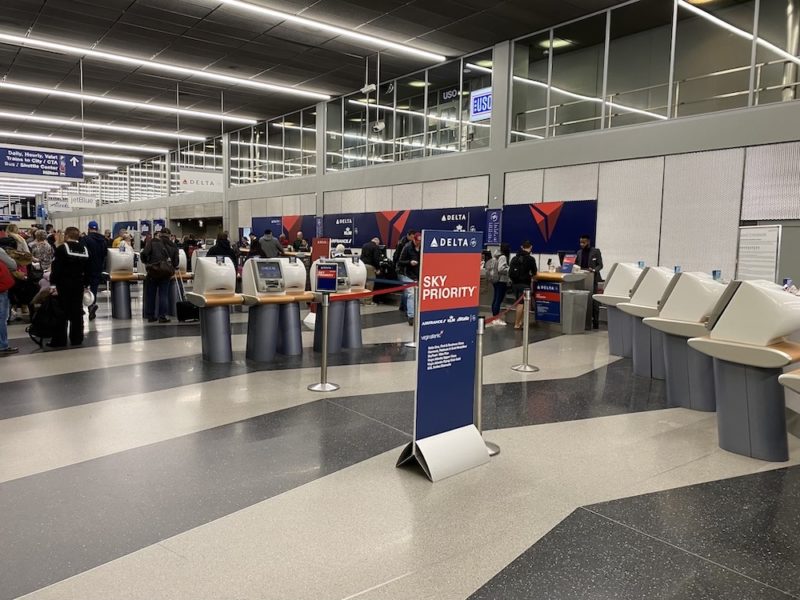
Delta Check-in 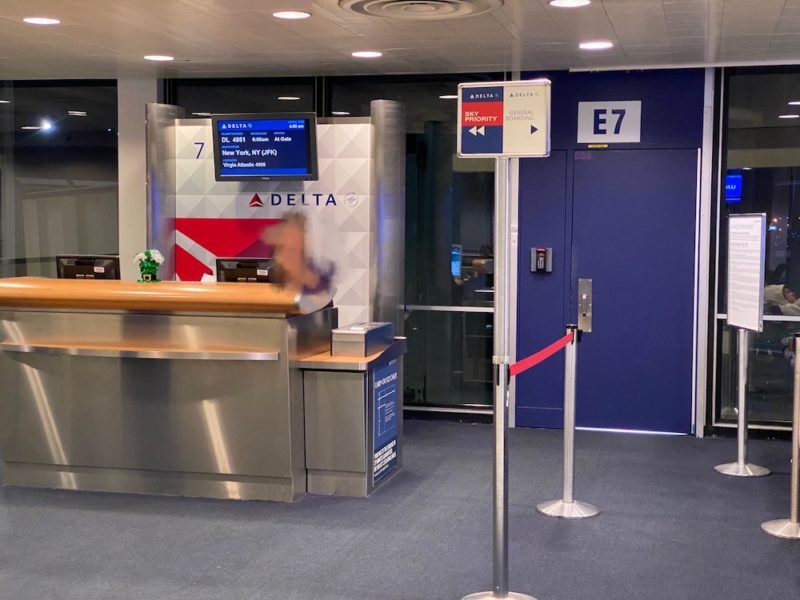
Delta Boarding Gate
Airline Lounge Experience During the COVID-19
In all the lounges I visited during this trip, there were not many people. As most business travel has been suspended, visitors were mainly leisure travellers.
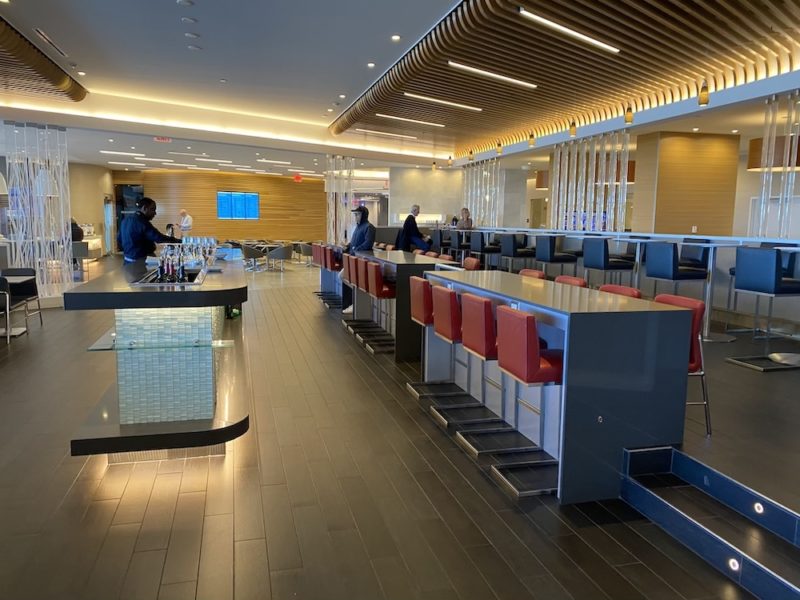
American Airlines Flagship Lounge JFK 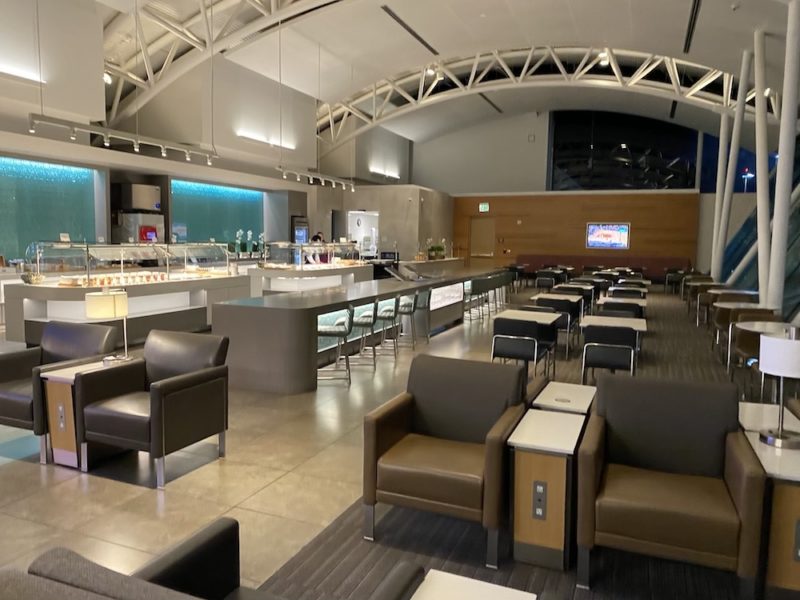
American Airlines Flagship Lounge LAX
In American Airlines lounges, foods are now only served in small portions.
At United Club you can either request food at the bar area, or there will be staff passing out food out on carts every once in a while. The tables were all empty.
When transiting in Osaka, I visited the Japan Airlines Sakura Lounge.
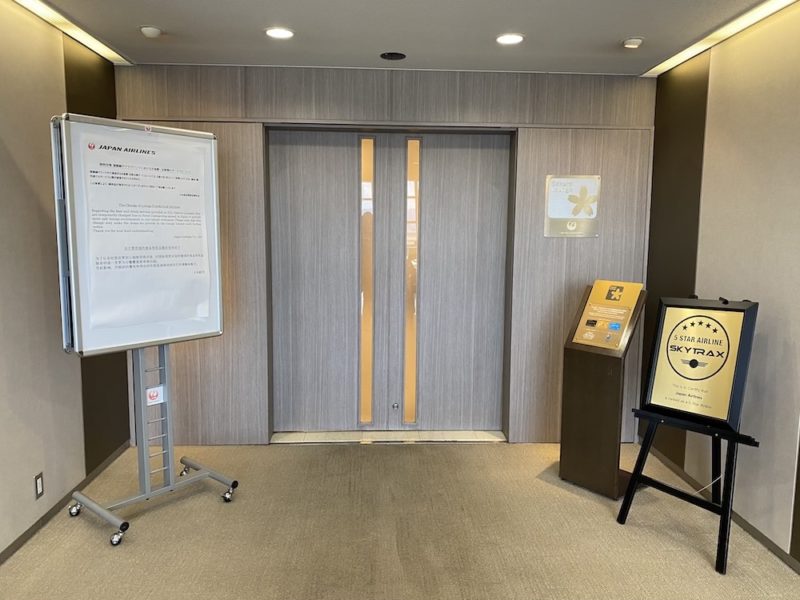
All hot food services were suspended and only cold dishes in small plates were served.
US Flight Experience During COVID-19
Upon boarding, many passengers started cleaning their seats using antiseptic wipes. As suggested by many airlines, passengers should not use alcohol wipes to clean the seat surface; doing this may cause severe damage. The tray table, window, air nozzle and the armrest are all okay to clean.
So far, US airlines are keeping their in-flight catering services. However, beverages are now only served in single-use plastic cups.
On my Delta flight, only 2 out of the 12 passengers in First Class chose to have breakfast.
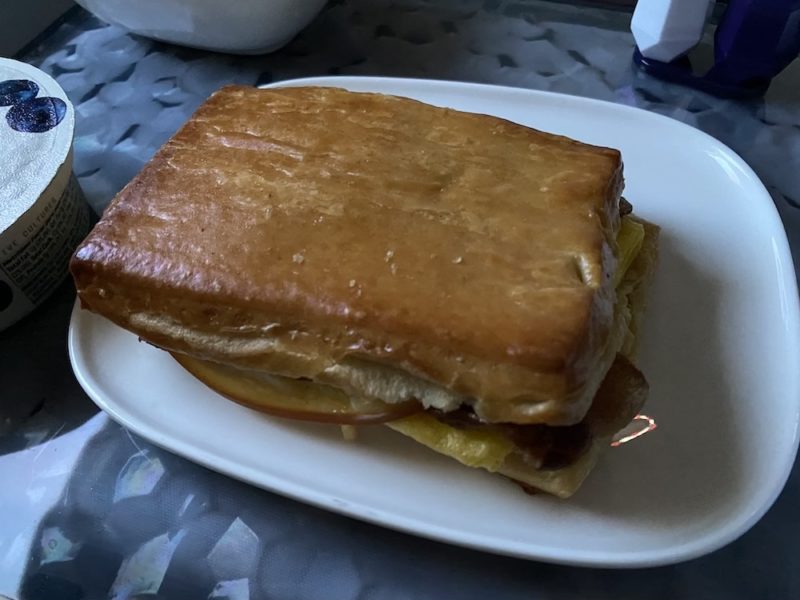
On my later American Airlines transcontinental flight, I chose to wait until others had finished before having dinner.
Special in-flight announcements were also made by all three US airlines, to tell passengers to sneeze into napkins or arms.
Guam Transit Experience
None of the flights and airports tested my body temperature before arrival at Guam.
Guam customs had strict entry and quarantine regulations. All arrival passengers are required to be screened for body temperature, immediately after disembarking.
Two health declaration forms were also required to be filled out, these were subsequently examined by health officers.
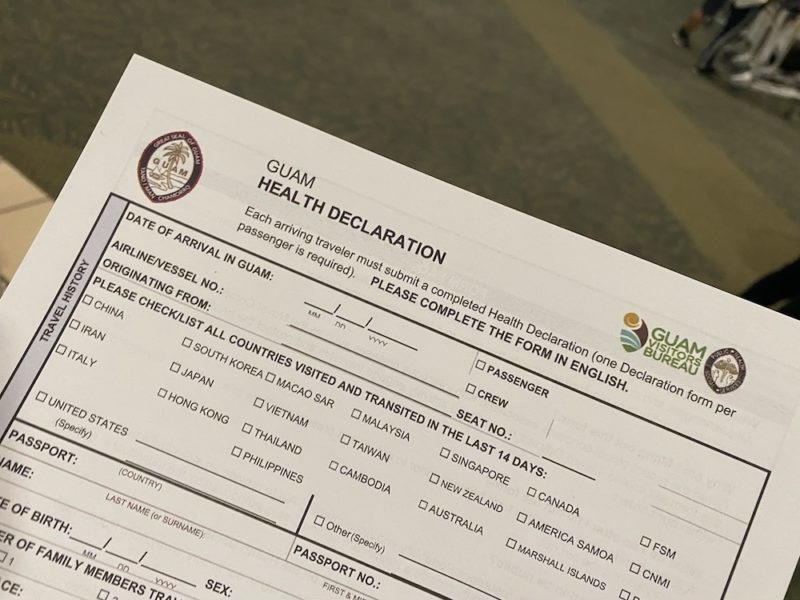
Osaka Transit Experience
The transit at Osaka was smooth. An information board with my next flight was placed at the bridge when arrived.
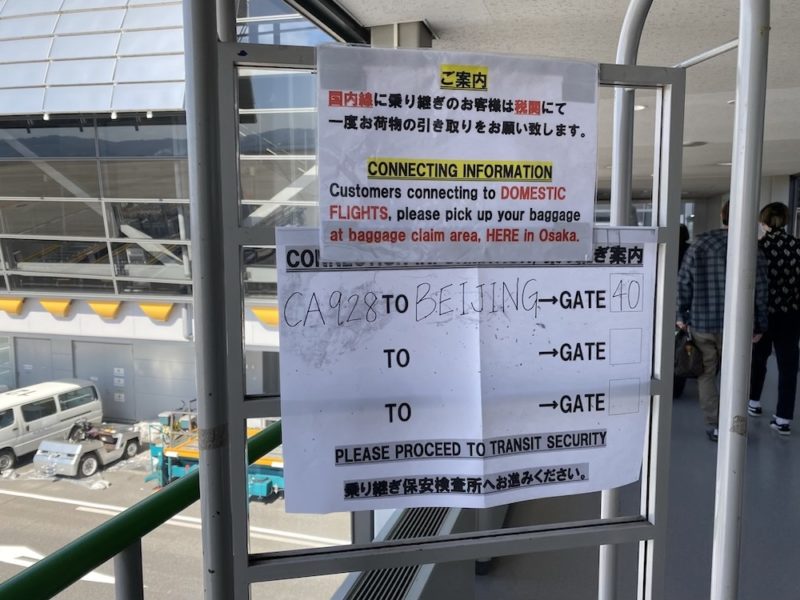
It was not until I was transiting at Osaka that I felt the tension of the coronavirus. In the transit line, about ten passengers arrived from Helsinki and were wearing full protection, including protective suit, goggles, gloves and N95 masks.
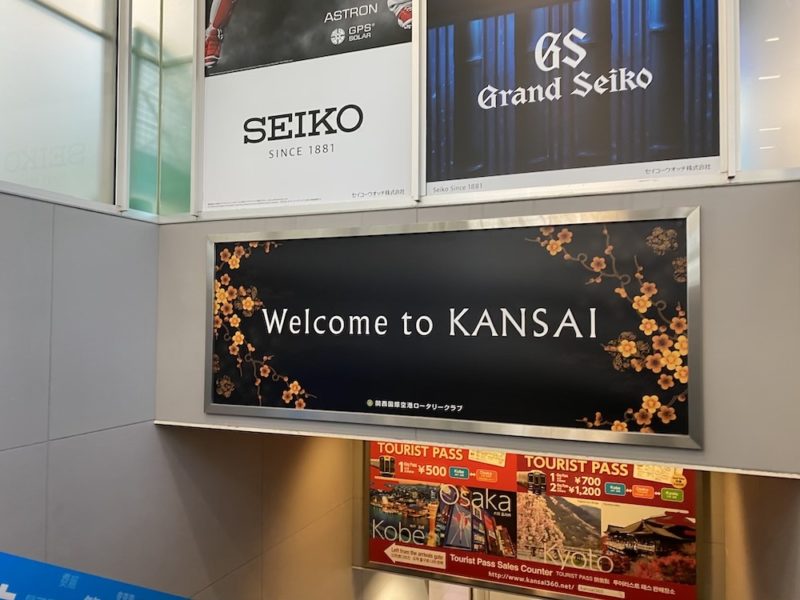
Because my flight arrived right after a Finnair Airbus A350, the transit line was relatively long. It took about 45 minutes to get through.
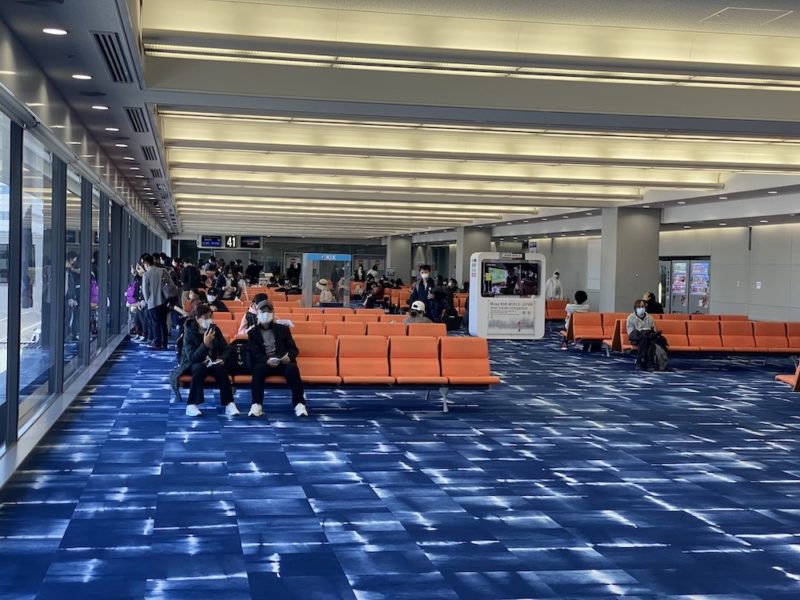
Air China Experience During the COVID-19
My Air China experience started from the boarding gate. At the gate I was asked to fill out three forms, asking my personal information and travel history. Then, my body temperature was taken and recorded. I was given a paper to hold, indicating that my body temperature met that of the boarding requirements.
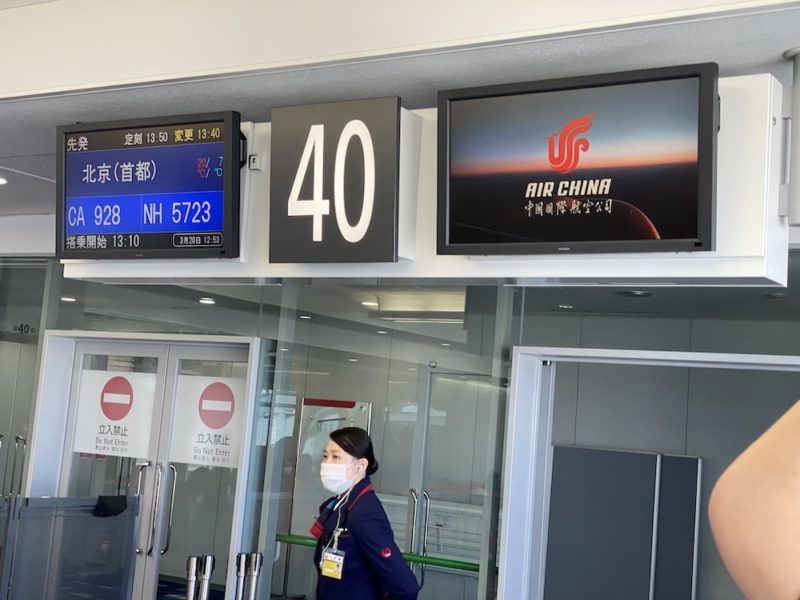
Upon boarding, there was a small desk in the bridge where two doctors were located. The paper that I was given, mentioned above, was taken from me and again my body temperature was checked.
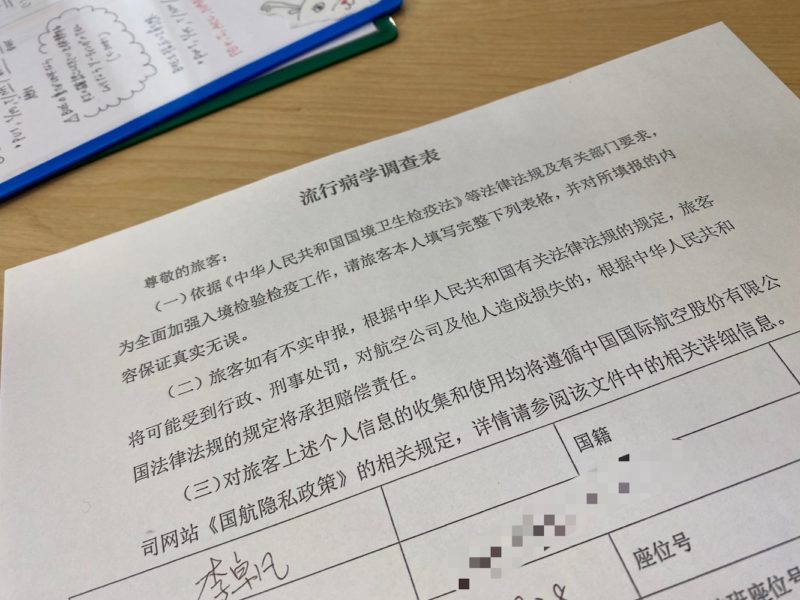
Standing at the aircraft door were security staff. Their job was to make sure every passenger was wearing a mask during boarding.
Waiting for me on my seat was a bottle of water, an antiseptic wipe and some slippers. No blanket or pillow was offered. All magazines had also been removed from the aircraft, leaving only the safety information card.
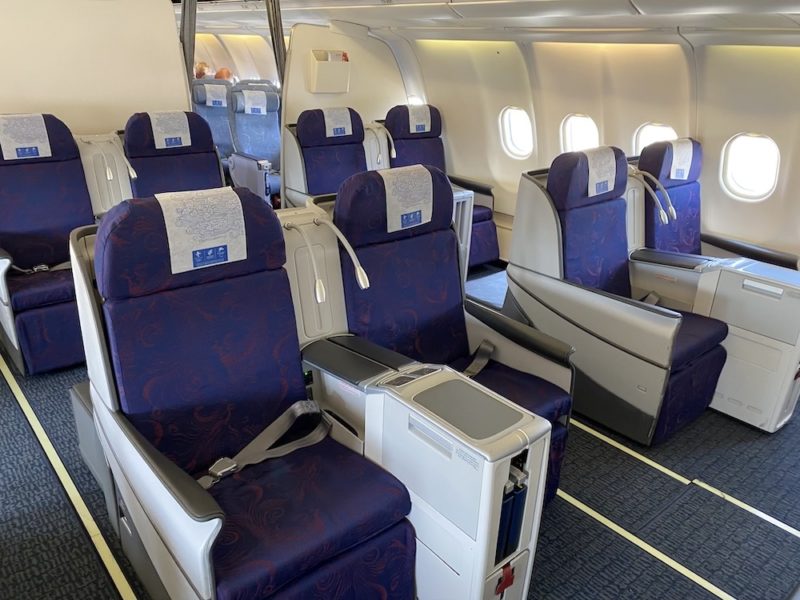
After settling down, the purser came round to greet me and I was offered a snack box with a bag of beef. Inside the snack box was some bread, milk, and an orange.
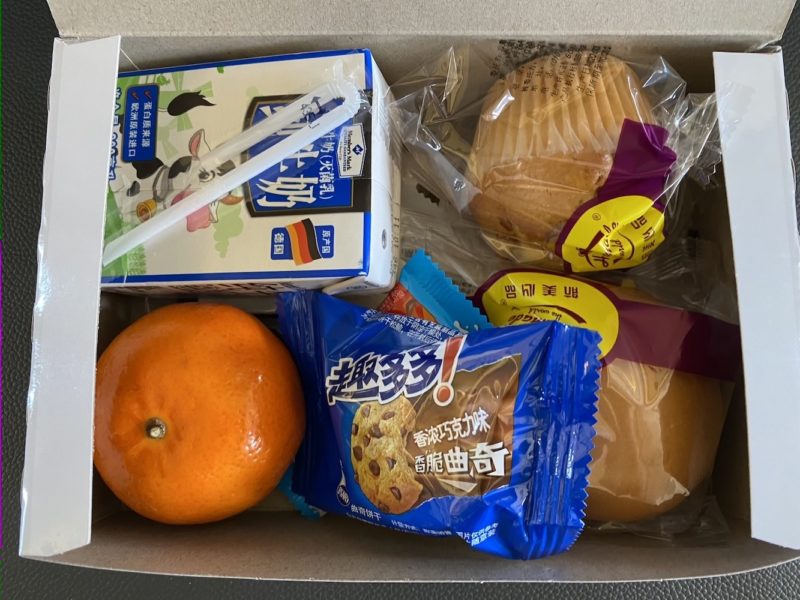
Then I was given a health declaration form, which is required by customs. Of course, this form may also be filled out on your phone prior to departure.
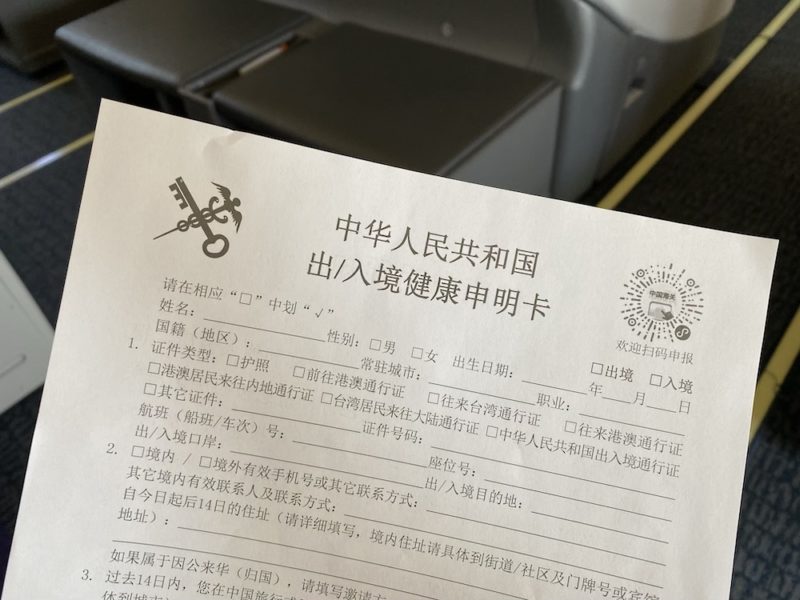
There was no service during the flight at all. Before landing, two cabin crew members came round to measure the body temperature for each passenger.
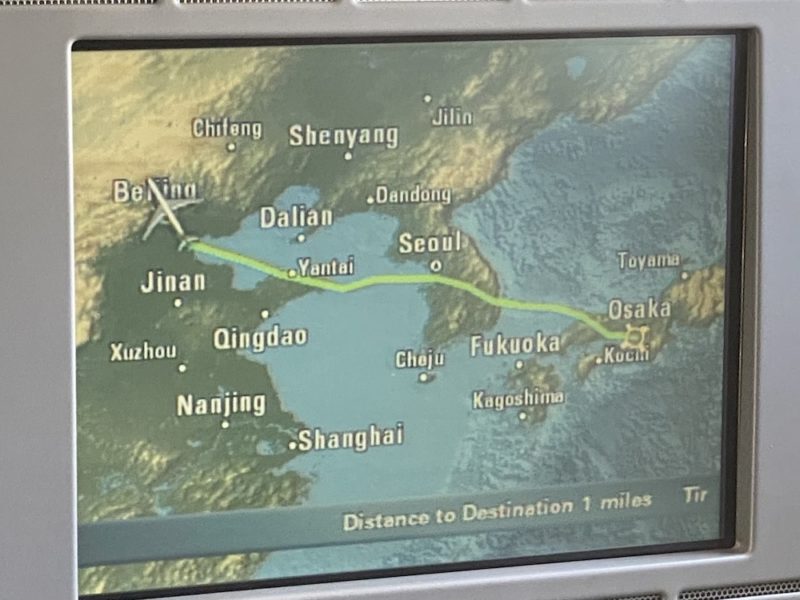
Beijing Arrival and Quarantine Experience
The aircraft parked at T3-D after it had arrived. This terminal is usually a domestic terminal, but now it has been converted into a special international flight handling space.
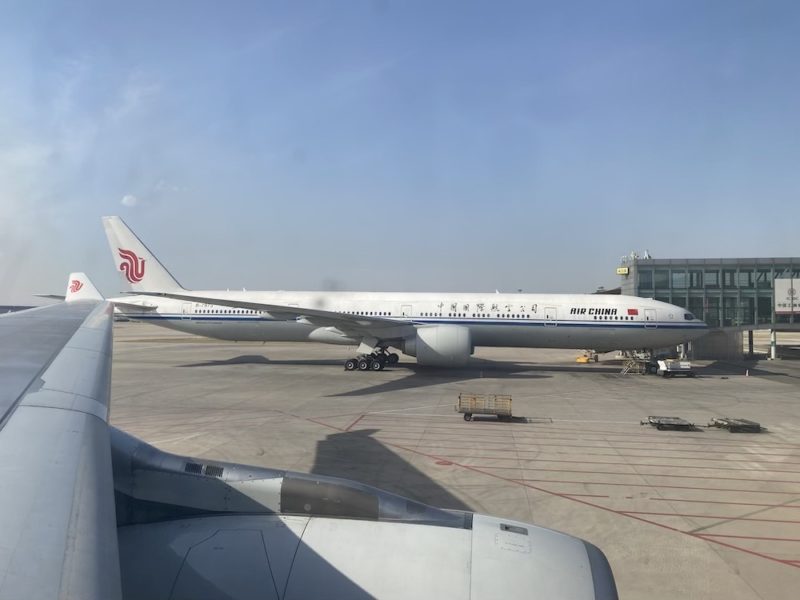
As passengers disembarked, there were immigration health officers standing in the bridge checking body temperatures.
Flights were disembarked one at a time and the terminal was disinfected after each flight, to avoid transmission.

Arriving at customs, the first step was to hand in the health deceleration form. The doctor asked about health information, origin country and then once again measured body temperature.
The next step was to clear immigration and customs. All the procedures were the same as usual, except for all the officers wearing full protective suits.
Then, I was directed to the departure level. No flights now depart from this terminal, so it is now being used as a waiting area. Each flight number was called, which meant that passengers on that flight could then pick up their checked luggage. All checked luggage was disinfected and scanned before you received them.
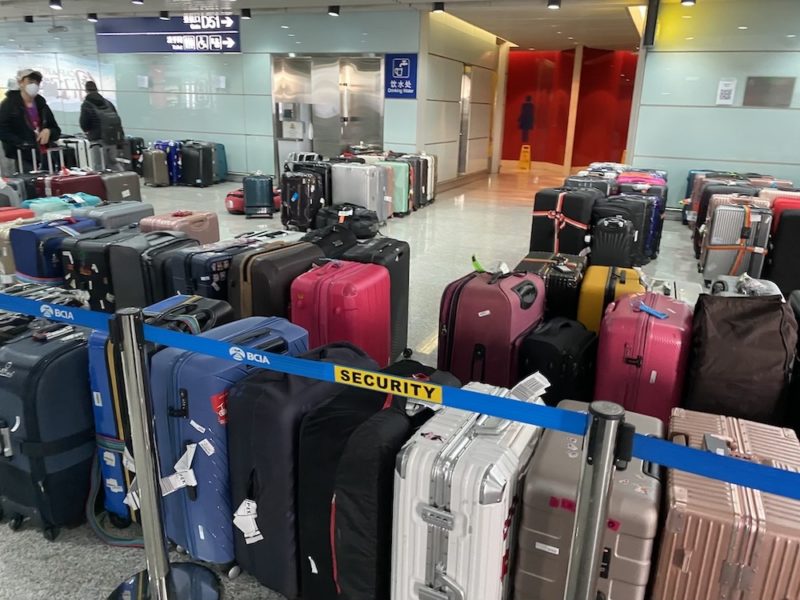
With all the luggage in hand, now it was time to board the bus. Passengers must not sit next to each other.
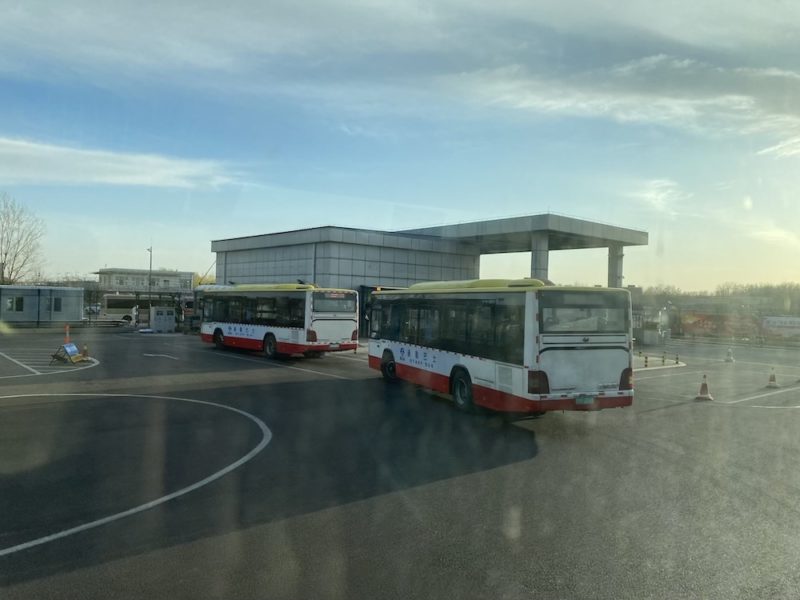
Airport Bus 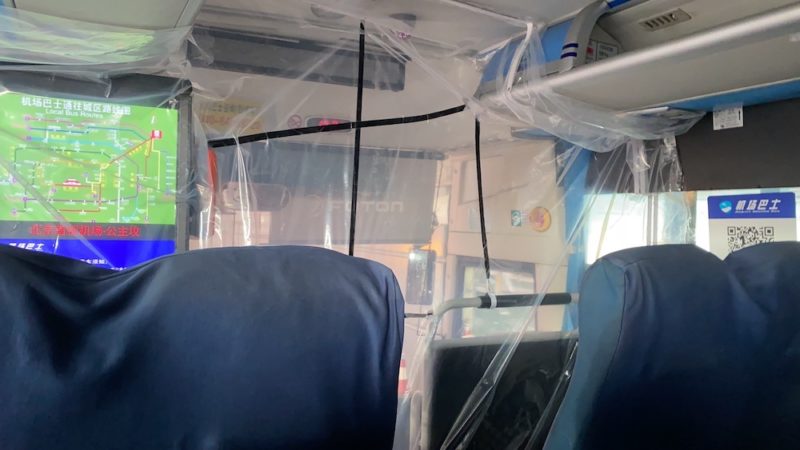
Bus Interior 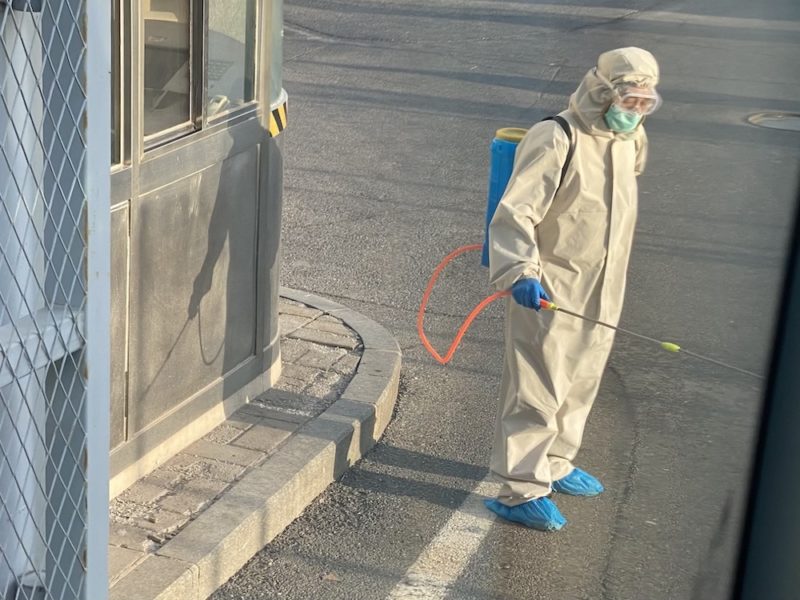
Disinfecting the Bus
All passengers, no matter where you came from or where you are going, are being transported to the new China International Exhibition Center in Shunyi district.

There, passengers who are staying in Beijing will enter the small room to get separated by the district they are going to. Other passengers going to other provinces, myself included, entered into a large room to get separated.
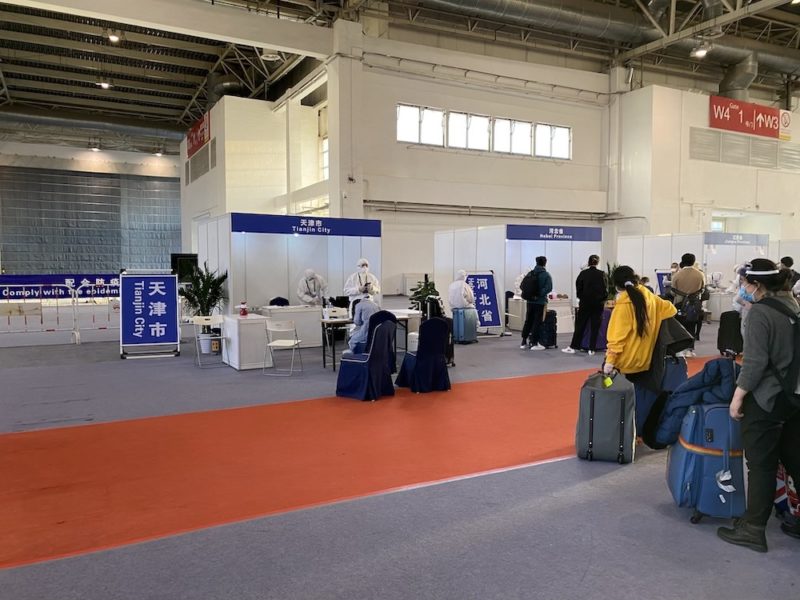
Signed up at the Tianjin desk, I was told to wait for the next bus. I was the 140th passenger that day.

Each bus has a 50-seat capacity but is only allowed to carry 20 passengers, with empty seats next to everyone. There was also 1 driver and 4 doctors on each bus.
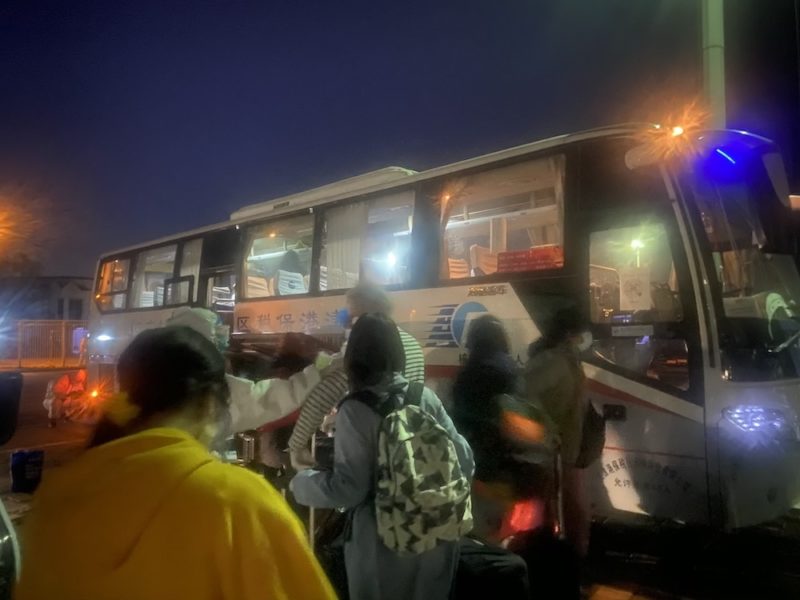
The bus stopped at the expressway exit in Tianjin. There, passengers were separated by the district they were going to. Including myself, there were three passengers going to Heping.
Quarantine Life in China
Everyone who arrives in China from a foreign country is now required to collectively quarantine at a government-designated hotel for 14 days.
It took about 30 minutes before arriving at my quarantine hotel. There, I was greeted by a few community leaders and was given my room card.
I was surprised by how prepared they were for my arrival, it was after all already 22:00.
My room was on the 8th floor. Because of the risk of transmission in elevators, everyone is required to use the stairs. This will be exhausting for those having lots of luggage, or those who are less physically able.
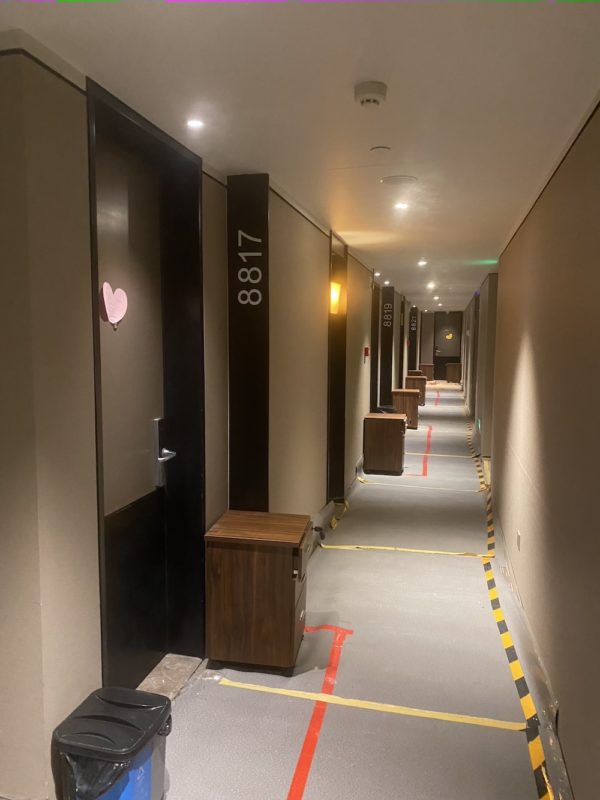
The hotel, Home Inn Plus, is three-star rated. It costs ¥180 ($25) each night for my 14-days stay. The distance from my home was only a 10-minute walk.
Waiting for me in the room were two large bottles of water, two pairs of slippers, two towels, trash bags, a toothbrush, a small cup, a soap and a disinfection spray.
Entertainment books and posters about COVID-19 were also provided.
There was a WeChat group for the whole building, which had four doctors active in it. Everyone was required to submit two body temperatures readings, one in the morning and one in the afternoon of each day.
Three meals were also provided each day, which cost ¥100 ($14). The quality of the food was exceptionally good. For lunch and dinner, there were two meat dishes, a vegetable dish, a soup, a box of rice, a cup of yogurt and fresh fruit.
The dishes were often local family ones, which I enjoyed a lot.
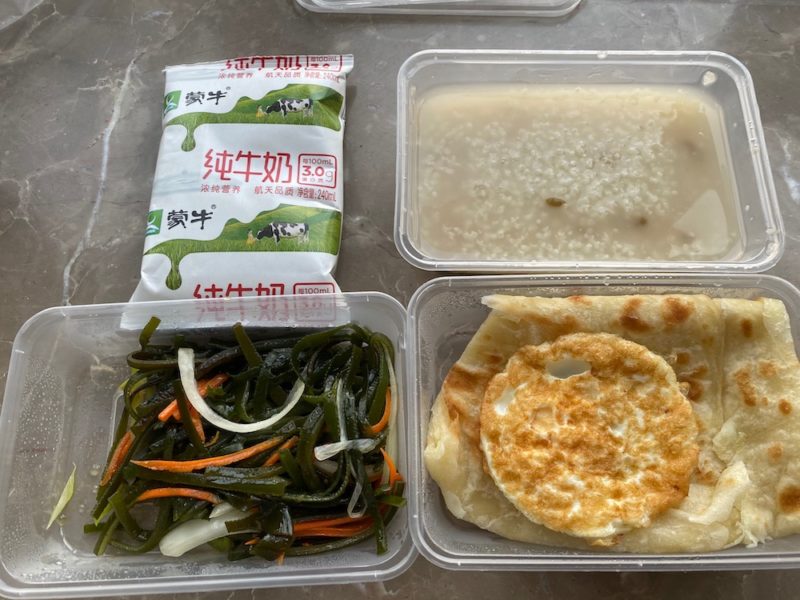
Breakfast 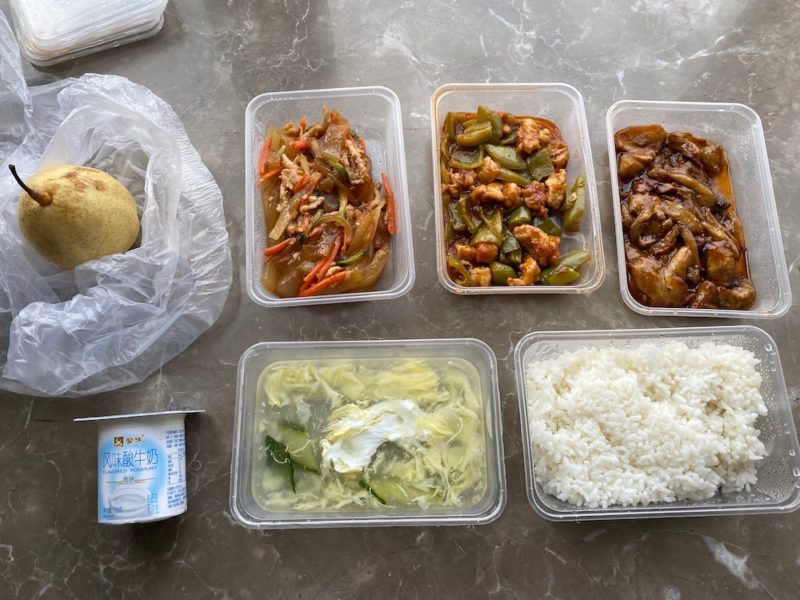
Lunch 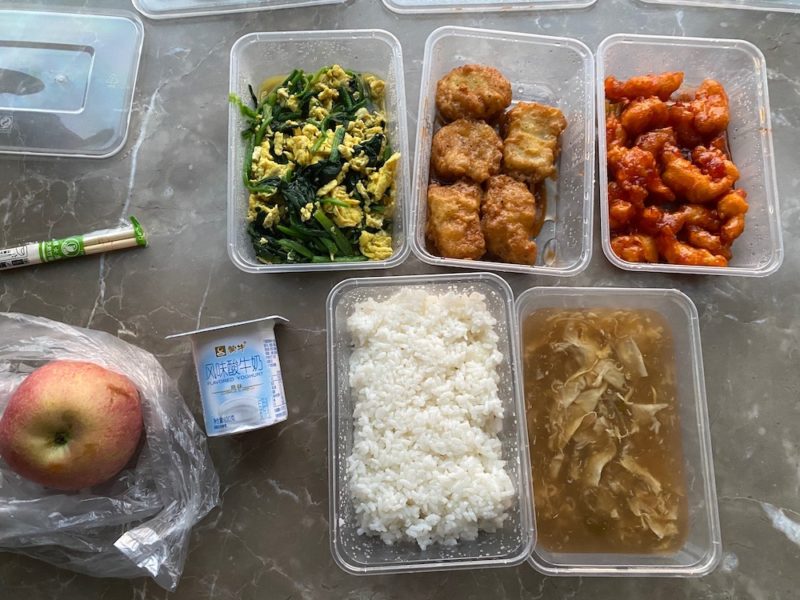
Dinner
Deliveries are allowed, however only if the food is packed and sealed. Any packages were being disinfected, before being delivered to each room.
Current Entering Policy of China
Policies are changing every day with the spread of the virus. We strongly urge you to check the latest policy on official government websites before travelling.
Currently, all international flights to Beijing will stop at another city to finish the quarantine process; this includes testing, clearing immigration, and clearing customs. The “First Entry Point” includes Tianjin, Hohhot, Shanghai, Xi’an and Taiyuan.
Most of these cities, and other cities that still have international flights, require 100% COVID-19 testing, this means everyone will be tested.
Furthermore, all passengers, even those who have tested negative, are required to stay in mandatory 14-day quarantine at a government-designated hotel.


